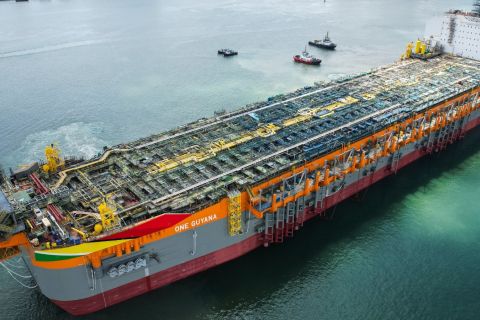A step change in the evolution of seismic recording systems began 10 years ago with the commercialization of high-channel-count autonomous nodal recording systems. While nodal recording systems such as the seismic group recorder were introduced decades prior, the advent of high-capacity lithium ion and polymer batteries, the reduction in the cost of solid-state memory and the availability of low-power and low-cost GPS chips changed everything. Combining these advances with the decreasing cost of electronic components and electronic manufacturing allows seismic nodal recorders to be built today for a fraction of the cost and weight of the seismic group recorders of the 1980s. It could be said that the seismic group recorder was a great idea but was 30 years ahead of itself.
New nodal recording systems weigh only 2 lb, including geophone and battery, and can record continuously for weeks. To seismic operators, this evolution has manifested a new generation of nodal recorders that provide huge flexibility in the way 3-D surveys are designed, allowing operators to greatly increase seismic trace density while staying within a customer’s budget. In addition, new nodal recording systems also have led to a marked improvement in receiver coupling and vector fidelity.
Better coupling
New nodes are much smaller than older recording systems, and they do not have cables attached to them. Therefore, the entire recording unit can be placed into the earth, not just the geophone sensor or accelerometer. GTI’s NuSeis nodal recording unit, for example, is designed to be pushed into a 2-in. diameter hole, which is created using a slide hammer. This is a very similar process to press-fitting a shaft into a bearing such as on a truck or an automobile axle, and it results in an exceptionally tight fit between the sensor and the earth, which is called earth grip coupling. Whereas a conventional geophone in a land case with a 3-in. spike might have a contact area of only a few square inches with the soil, the NuSeis nodes will routinely have as much as 50 sq in. of contact area.
The nodes also can reach denser, more consolidated material. GTI recently repeated experiments on receiver coupling originally done in the early 1980s showing that loose garden topsoil can be nonlinear at frequencies as low as 100 Hz. Getting beneath the loosest soil and into denser material can lead to improvements in high-frequency response and vector fidelity in general. Some seismic contractors have a long history of using marshcase geophones rather than land-case geophones for this exact reason. The new recorder approximates the size and shape of a marsh-case geophone.
In addition, the small size of the nodal recording unit and lack of any cable connections allows the entire unit to be quickly and efficiently placed below ground level. This placement results in a decrease in the pickup of background noise by eliminating any exposed surface vertical profile of the recording unit to wind and other airborne acoustical noises. Even the mechanical transfer of rain noise is highly attenuated when the nodal recorder is underground. And when a unit is planted with the top dome aboveground, the vertical profile is far more aerodynamic than other recording systems because of its sharp perpendicular edges.
Examples
In side-by-side field tests over the last two years, several examples have been collected. Figure 1 illustrates marked improvement in high-frequency response from a walk-away comparison test conducted near Angleton, Texas, using an accelerated weight drop as the seismic source. The figure shows bandpass filter panels for the data recorded with the NuSeis unit versus data recorded with another nodal recording system using an external single geophone with a 3-in. spike.

The center panels on each side have been filtered with a 60-Hz to 120-Hz bandpass, and the reflections are both stronger and more coherent on the NuSeis data (the right side) from 300 ms down to 1.2 seconds. The right-hand panels on each side have been filtered with a 70-Hz to 140-Hz bandpass filter, and the comparison is even more dramatic.
Above 70 Hz, the geophone data contain very little reflected energy, whereas the NuSeis data have clear reflections down to at least 700 ms. Spectral analysis quantifies the difference in signal level to be on the order of 6 dB to 8 dB greater for the NuSeis data in this time interval.
On this same comparison test, the first breaks were also visibly sharper and stronger. As is generally true, the first breaks have the highest frequency content of any events on these seismic records. In this case, the bandwidth of the signal on the NuSeis data goes all the way up to 125 Hz, with a maximum difference of 16 dB at 85 Hz relative to the geophone data (Figure 2). Improving first-break sharpness can make it easier to pick the first arrival time and minimize errors in the computation of refraction or other static solutions.

Signal-to-noise ratio is one of the key metrics in evaluating field seismic data. This metric can be improved by either increasing the signal levels or decreasing the noise levels. Figure 3 shows that the aerodynamic profile of these nodes has decreased the background wind noise level substantially in the high-frequency portion of the spectrum versus geophone data. Specifically, the figure shows Vibroseis-correlated records with a high-pass filter applied with the corner points at 80 Hz and 100 Hz, respectively. The banding caused by noisy stations in high-grass areas of a hay field can be seen on the geophone data but not on GTI’s data.

Vector fidelity has been an important topic in seismic acquisition research for almost 40 years. While the ability to image reservoirs deep within the earth is dependent on powerful processing algorithms, those algorithms need accurate measurements from the earth’s surface to provide optimal results. The old phrase “garbage in, garbage out” is never truer than in seismic acquisition and processing. The new generation of compact recording nodes should improve vector fidelity and thereby start the long seismic imaging workflow with the best input possible.
Recommended Reading
Sinopec Brings West Sichuan Gas Field Onstream
2024-03-14 - The 100 Bcm sour gas onshore field, West Sichuan Gas Field, is expected to produce 2 Bcm per year.
Iraq to Seek Bids for Oil, Gas Contracts April 27
2024-04-18 - Iraq will auction 30 new oil and gas projects in two licensing rounds distributed across the country.
US Gas Rig Count Falls to Lowest Since January 2022
2024-03-22 - The combined oil and gas rig count, an early indicator of future output, fell by five to 624 in the week to March 22.
Deepwater Roundup 2024: Americas
2024-04-23 - The final part of Hart Energy E&P’s Deepwater Roundup focuses on projects coming online in the Americas from 2023 until the end of the decade.
US Drillers Add Oil, Gas Rigs for First Time in Five Weeks
2024-04-19 - The oil and gas rig count, an early indicator of future output, rose by two to 619 in the week to April 19.


